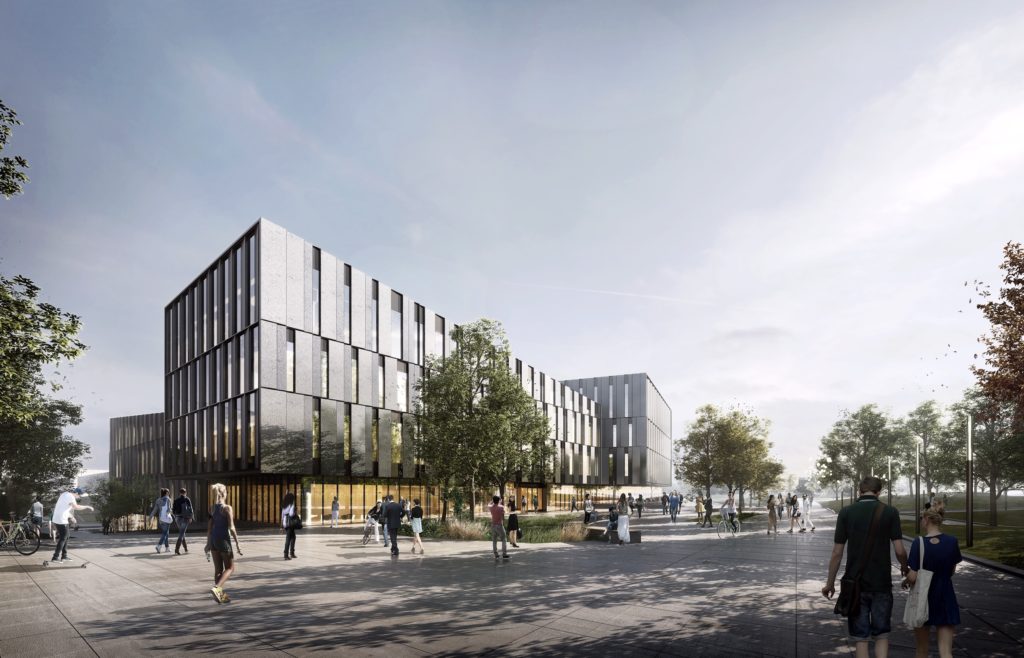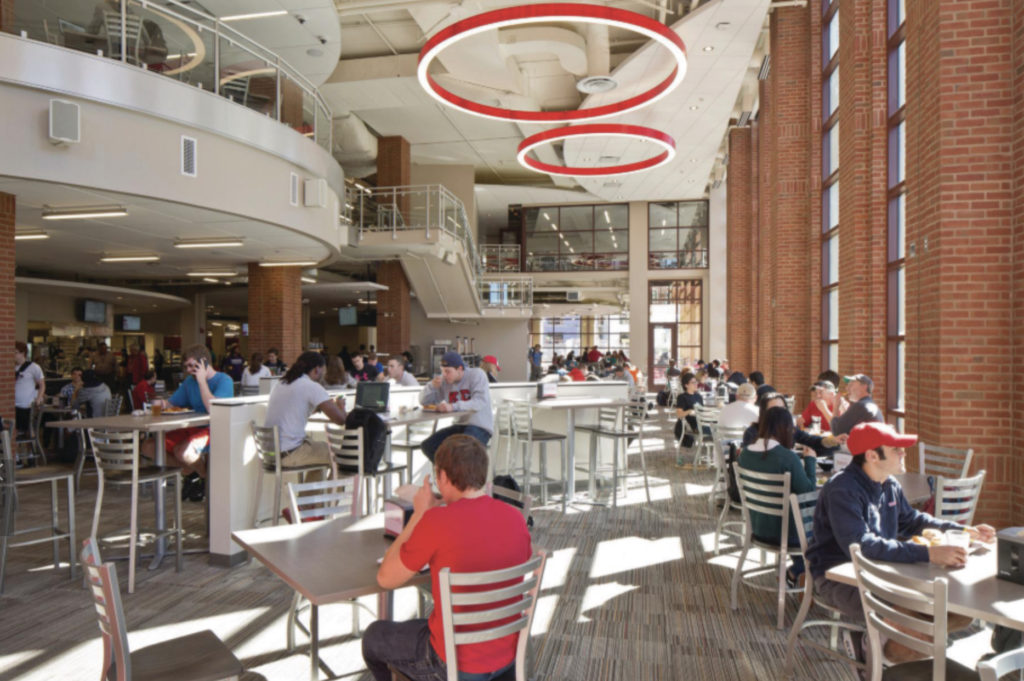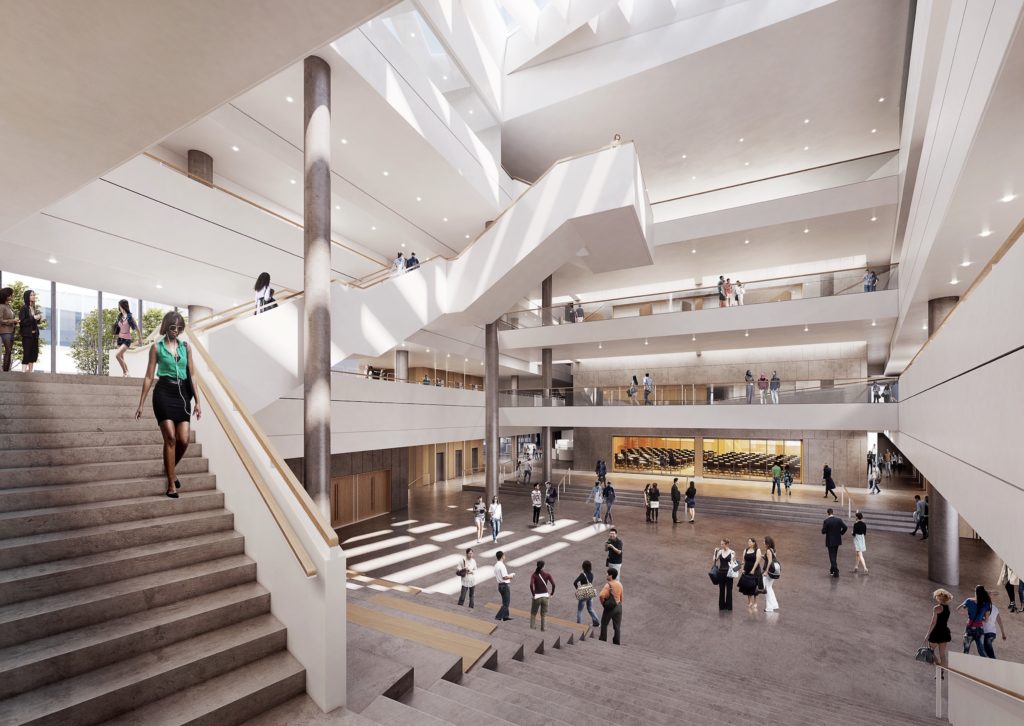In the reinvigorated and booming city of Cincinnati, Ohio, resides KZF Design, a commercial design firm that prides itself on fostering an internal culture of continuous improvement and reinvention. It is this focus that translates to strong relationships, creativity and independent thinking for its clients — traits that have enabled it to rank among the top Midwest design firms for more than 30 years.
A key component to that success — and a public statement from the firm about “who we are” — is its drive to create places that bring cultures to life. “We’re not necessarily talking about corporate culture,” Eric Anderson, manager of marketing and business development, explained. “Each client has a unique culture in their organization, so we take time to understand how our clients work and what their organizations would like to do better. It means our work is adjusted to fit the unique needs of each individual client.”
The KZF team of more than 70 architects, engineers, interior designers and urban planners are housed in one building, enabling them to meet client design needs holistically, manage budgets efficiently and deliver projects on time through streamlined communication and production. The firm offers specific expertise in education, transportation and infrastructure, industrial, cultural and government, civic and public safety projects and workplace. And, while the bulk of KZF’s design work originates from clients located in the greater Cincinnati area, its projects are far reaching.
The firm reported leading or contributing to projects in more than 40 states and also internationally in areas such as Europe, Turkey, Saudi Arabia, Japan and the United Arab Emirates. “We perform work all over the world in a very diverse range of project types,” Anderson said. “We can offer the same depth and breadth of experience as the big guys do, but from a local level.”
In addition, the firm’s corporate culture and mission help it achieve high retention levels among employees. In fact, the firm said it’s not uncommon for repeat customers to work with the same staff members time and again, which translates into better client relationships. “We have high tenure among our staff; some people have been with us 15 years or more,” Anderson said. “Clients like having the same team throughout the life of their project, and repeat clients enjoy the benefit of working with us on multiple projects over multiple years.”

Top of Page: The University of Cincinnati’s project-based approach to learning is emphasized by flexible teaching and study facilities, which are enriched by a well-balanced composition of daylight and artificial light.
Above: The UC College of Business building, which has a green profile, creates space for informal meetings between students, researchers and businesspeople, both inside and outside.
MEETING UNIQUE CLIENT NEEDS
Helping to drive KZF’s success is its client relationship strategy. The firm said it takes time to understand how its clients work within their spaces and what their organizations want to do better. “KZF designed our facility by listening to input from the school community, complying with Cincinnati Public School standards and conforming toOhio School Facilities Commission (OSFC) standards,” noted Greg Hook, principal, Covedale Elementary School, Cincinnati Public Schools.“KZF was able to make that vision a reality, even with the constraints placed upon them by OSFC.”
Jeff Klein, retired fire chief, Perrysburg Fire Division, Perrysburg, Ohio, added, “With KZF Design’s extensive experience in fire station design, they have an unmatched working knowledge not only of National Fire Protection Association (NFPA) standards that apply to fire station design, but also the needs of the firefighters who will be working and living there. Because of their vast experience, KZF Design was able to listen to our desires and give multiple solutions to meet those needs.”
Staying on top of the latest trends within each market served is also important as specifiers can gain a better understanding of the issues influencing interior design and product specification. In addition, some market sectors – such as education and government – are more budget conscious than others, meaning designers need to do more with less to meet client requirements. This can impact the selection of interior decorating products such as flooring. “We try to look at the use of the space and what the clientele are trying to achieve from an aesthetic standpoint and from cost/budget, durability and maintenance standpoints,” Anderson said. “We try to make sure we help them with their diverse needs.”
There are various other factors KZF said it considers when creating spaces. Sustainability can be among them, depending on the client. “Some clients, such as military, require designs that meet specific LEED-certification goals,” Anderson noted. “We have to make sure we understand what the clients’ needs are, meet their goals and follow through to the end.”

Students of Ohio State University are encouraged to leave their ‘no-frills’ dorms to socialize
by the juxtaposed engaging common areas.
DESIGN WITH A PURPOSE
KZF is well positioned to help clients design better futures by creating places that transform organizations, work forces and communities. When it comes to education design, some schools are creating new buildings that stand above the crowd while others are remodeling existing structures with a focus on new teaching and technology requirements.
“You need to distinguish your institution in an increasingly competitive market,” Anderson said. “Create spaces that attract and retain the best students, staff and faculty. Nurture a unique community culture and campus identity that enhance student success.”
Case in point: KZF is collaborating with Henning Larsen Architects for a new, 225,000-square-foot business school at the Carl H. Lindner College of Business that will open in Cincinnati this fall. The $120-million, four-story building aims to further the teaching, research and service mission of the school. “A cool, creative thing is the designer and client wanted to ensure students have the ability to study throughout the building,” Anderson said. “So, there are study counters, team rooms and little booths where students can get together.”
The building includes glass facades, a grand atrium, lobby, open workspaces, courtyard, a large café, lecture spaces and a teaching lab, among other amenities. The design targets LEED Gold certification and prioritizes sustainable strategies that minimize environmental impact while maximizing human comfort and well-being – indoors and out.
The firm also thrives within the university, government and military sectors. There is an extensive amount of renovation taking place in these sectors and KZF said its designers are actively involved. “We have specialized teams that focus primarily on some of those markets,” Anderson said. “Our education and government projects tend to be quite large with complex teams, and I think our clients appreciate that.”
David Prather, project manager, Cincinnati Park Board, said, “KZF Design has established itself as our ‘go-to’ consultant. Their consistency and excellence have not only instilled confidence with the Cincinnati Park Board, but also other governmental agencies and jurisdictions, regulators, contractors and other consultants.”
When looking at building and renovating facilities, KZF’s federal, state and local government clients have equally diverse needs. This requires professionals who are not just experts in complex security, regulations and detailed procedures, the firm said, but who also have a proven track record delivering assignments on time and on budget. These jobs include military installations, aerospace and defense, homeland security and border patrol, among others.
One of the latest government projects for the firm is a new facility for the Hamilton County Coroner and Crime Lab functions, relocating from existing facilities. KZF partnered with forensic lab expert Smith Group to provide project management, architectural services, mechanical/electrical, civil and structural engineering for the design. The forensic labs will feature a “timeless” design, according to Anderson. “It’s a different design strategy than what most government offices do and has great views to the outside,” he said.
To see this story in print:
